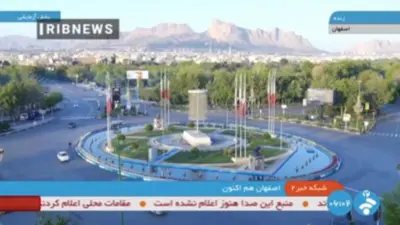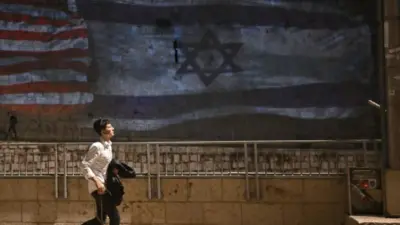We've updated our Privacy and Cookies Policy
We've made some important changes to our Privacy and Cookies Policy and we want you to know what this means for you and your data.
Iran schoolgirls remove hijabs in protests against government
- By David Gritten
- BBC News
Image source, Twitter/@1500tasvir
Schoolgirls in Iran have been waving their headscarves in the air and chanting against clerical authorities, in an unprecedented show of support for the protests engulfing the country.
Videos verified by the BBC showed demonstrations inside schoolyards and on the streets of several cities.
They echoed the wider unrest sparked by the death last month of a woman who was detained for breaking the hijab law.
In Karaj, girls reportedly forced an education official out of their school.
Footage posted on social media on Monday showed them shouting "shame on you" and throwing what appear to be empty water bottles at the man until he retreats through a gate.
This article contains content provided by Twitter. We ask for your permission before anything is loaded, as they may be using cookies and other technologies. You may want to read Twitter cookie policy and privacy policy before accepting. To view this content choose 'accept and continue'.
End of Twitter content, 1
In another video from Karaj, which is just to the west of the capital Tehran, students are heard shouting: "If we don't unite, they will kill us one by one."
In the southern city of Shiraz on Monday, dozens of schoolgirls blocked traffic on a main road while waving their headscarves in the air and shouting "death to the dictator" - a reference to the Supreme Leader, Ayatollah Ali Khamenei, who has the final say on all state matters.
This article contains content provided by Twitter. We ask for your permission before anything is loaded, as they may be using cookies and other technologies. You may want to read Twitter cookie policy and privacy policy before accepting. To view this content choose 'accept and continue'.
End of Twitter content, 2
Further protests by schoolgirls were reported on Tuesday in Karaj, Tehran and the north-western cities of Saqez and Sanandaj.
A number of students were also photographed standing in their classrooms with their heads uncovered.
Some were raising their middle fingers - an obscene gesture - at portraits of Ayatollah Khamenei and the founder of the Islamic Republic, Ayatollah Ruhollah Khomeini.
Image source, Twitter
Leadership faces new foe
Analysis by Rana Rahimpour, BBC Persian
After almost three weeks of protests, it is clear that Iran's leadership is facing a serious challenge.
Its opponents are no longer just politicians or people in their 20s. It is now facing teenagers - schoolgirls who are not scared of burning photos of the supreme leader.
The protests have continued despite Ayatollah Ali Khamenei's warning on Monday that they were "riots" orchestrated by the West.
Many of those taking part simply want a normal life. They might not understand politics, but they understand that they are not free to live their lives the way they want.
Now, every school and university could potentially become a headquarters for the protesters. Every day at school, teenagers will be able to get together and exchange ideas about how to overthrow the regime.
The question is whether and how the Islamic Republic will be able to stop them.
The protests by the schoolgirls began hours after Ayatollah Khamenei, who has final say on all state matters, broke his silence on the unrest and accused the United States and Israel, Iran's arch-enemies, of orchestrating "riots".
He also gave his full backing to the security forces, which have responded to the protests with a violent crackdown.
The unrest was triggered by the death of Mahsa Amini, a 22-year-old Kurdish woman who fell into a coma after being detained by morality police on 13 September in Tehran for allegedly violating the law requiring women to cover their hair with a hijab, or headscarf. She died in hospital three days later.
Her family has alleged that officers beat her head with a baton and banged her head against one of their vehicles. The police have denied that she was mistreated and said she suffered "sudden heart failure".
The first protests took place in Kurdish-populated north-western Iran, where Ms Amini lived, and then spread rapidly across the country.
Iran Human Rights, a Norway-based group, reported on Tuesday that at least 154 people had been killed by security forces so far.
They include 63 protesters whom ethnic Baluch activists said had died in clashes in the south-eastern city of Zahedan on Friday.
Top Stories
Features & Analysis
Most read
Content is not available








